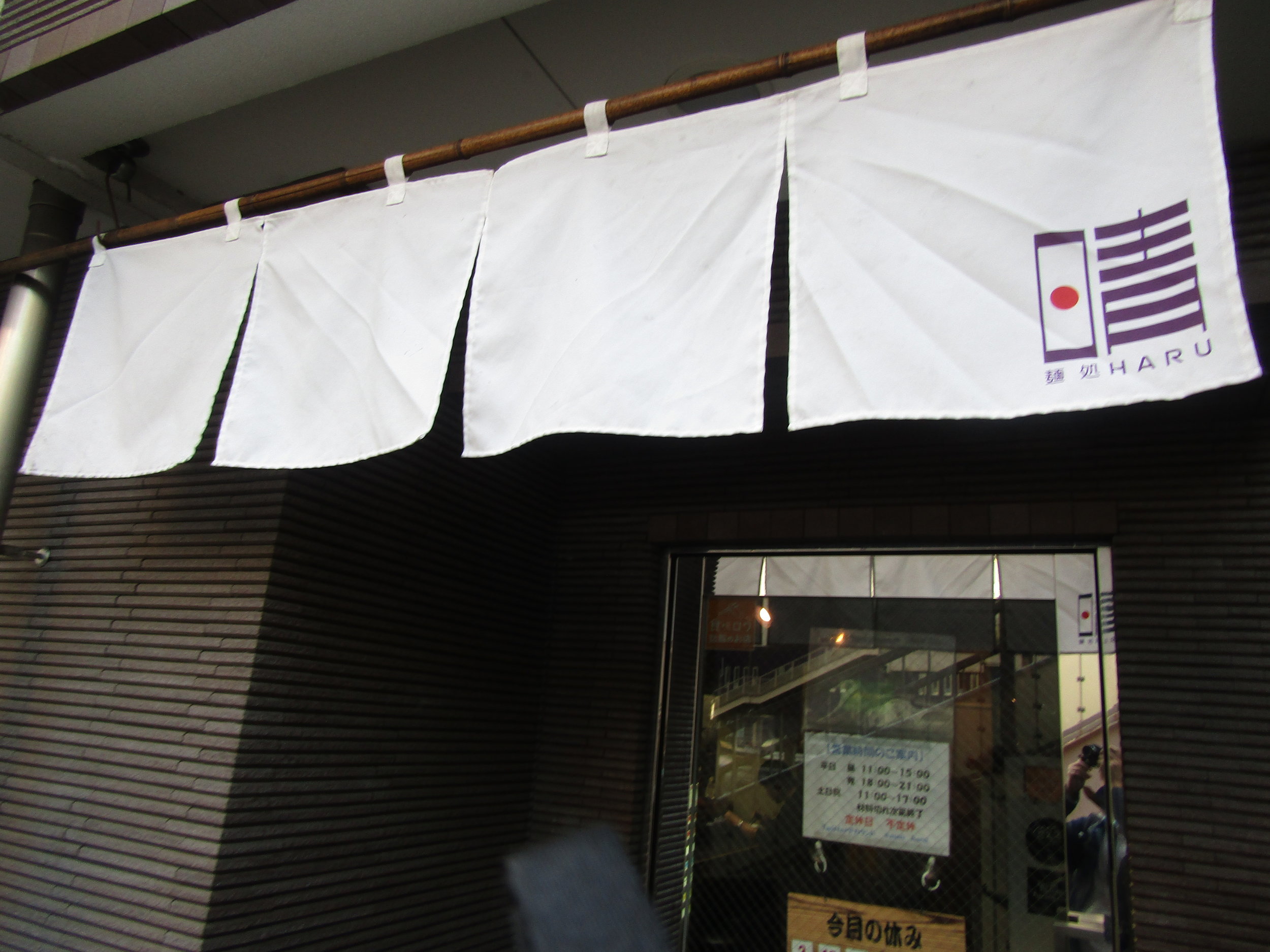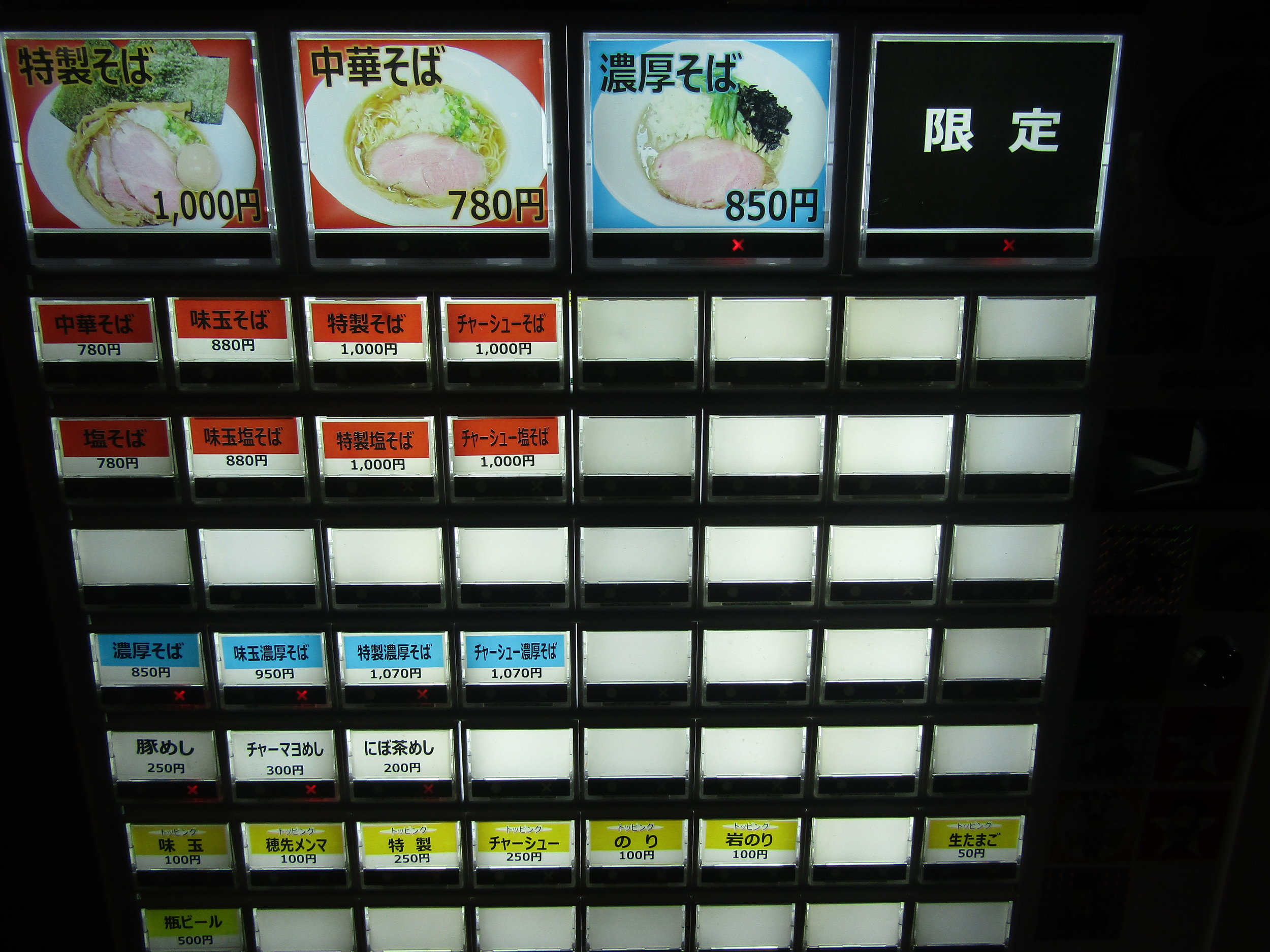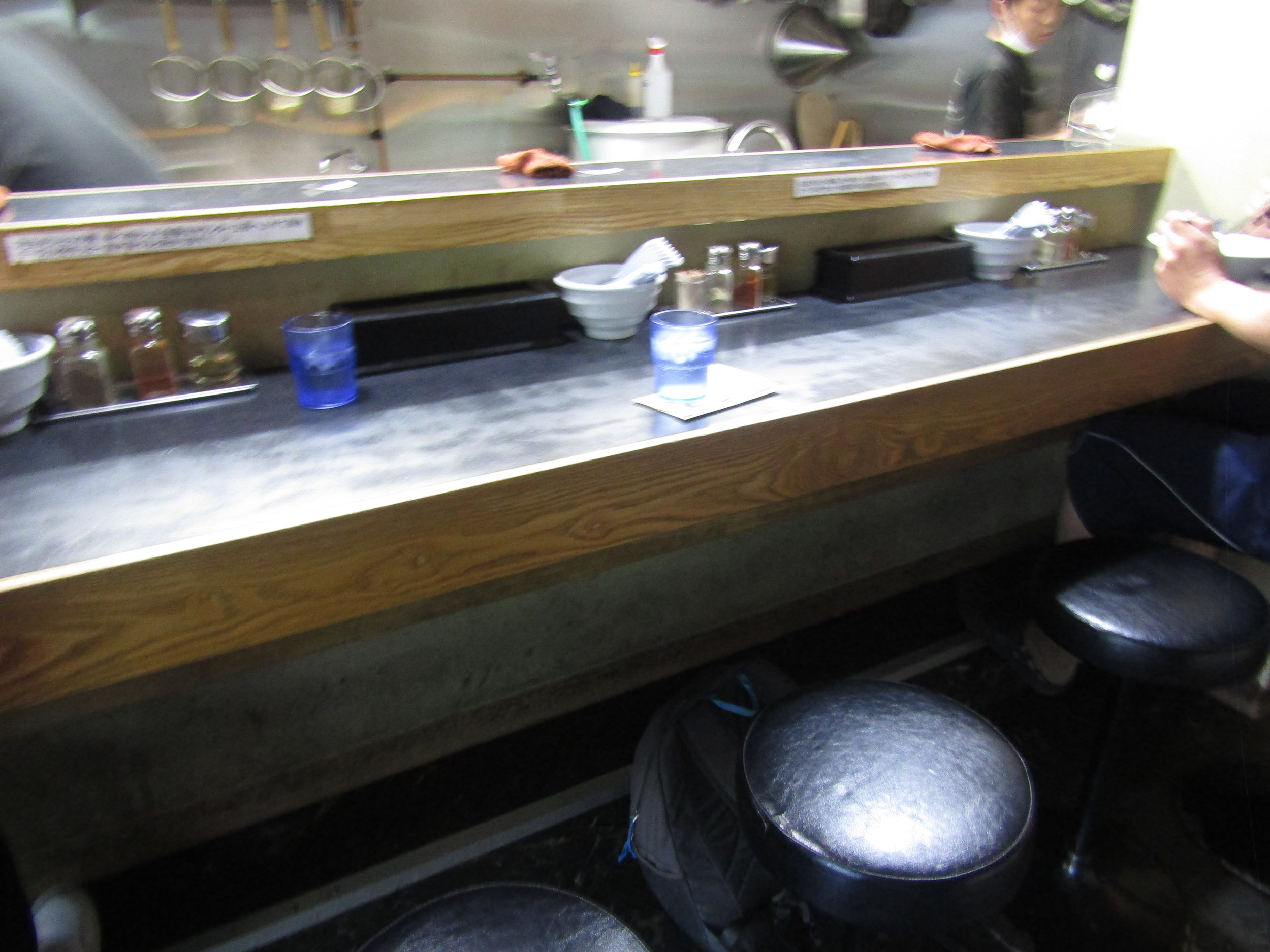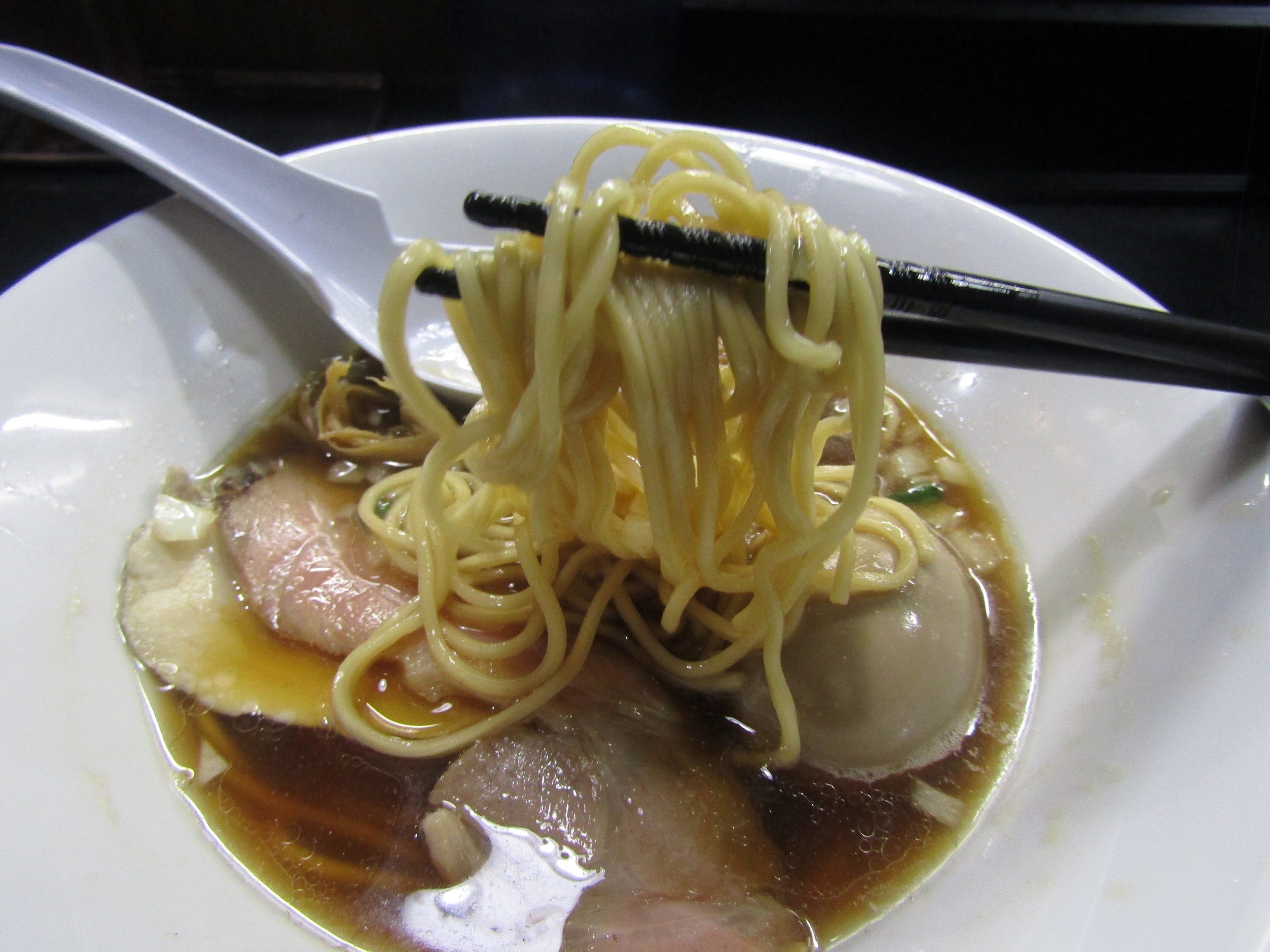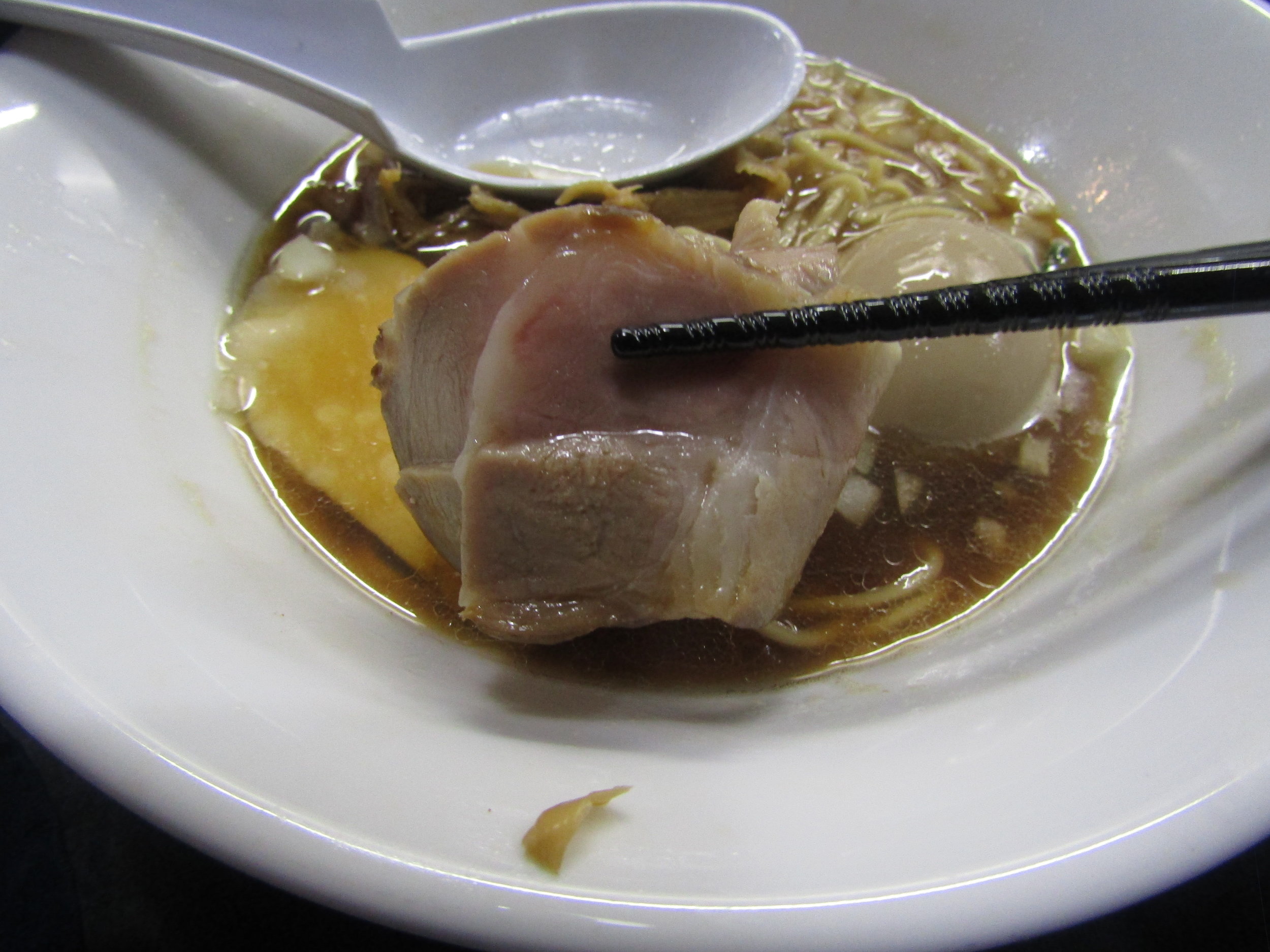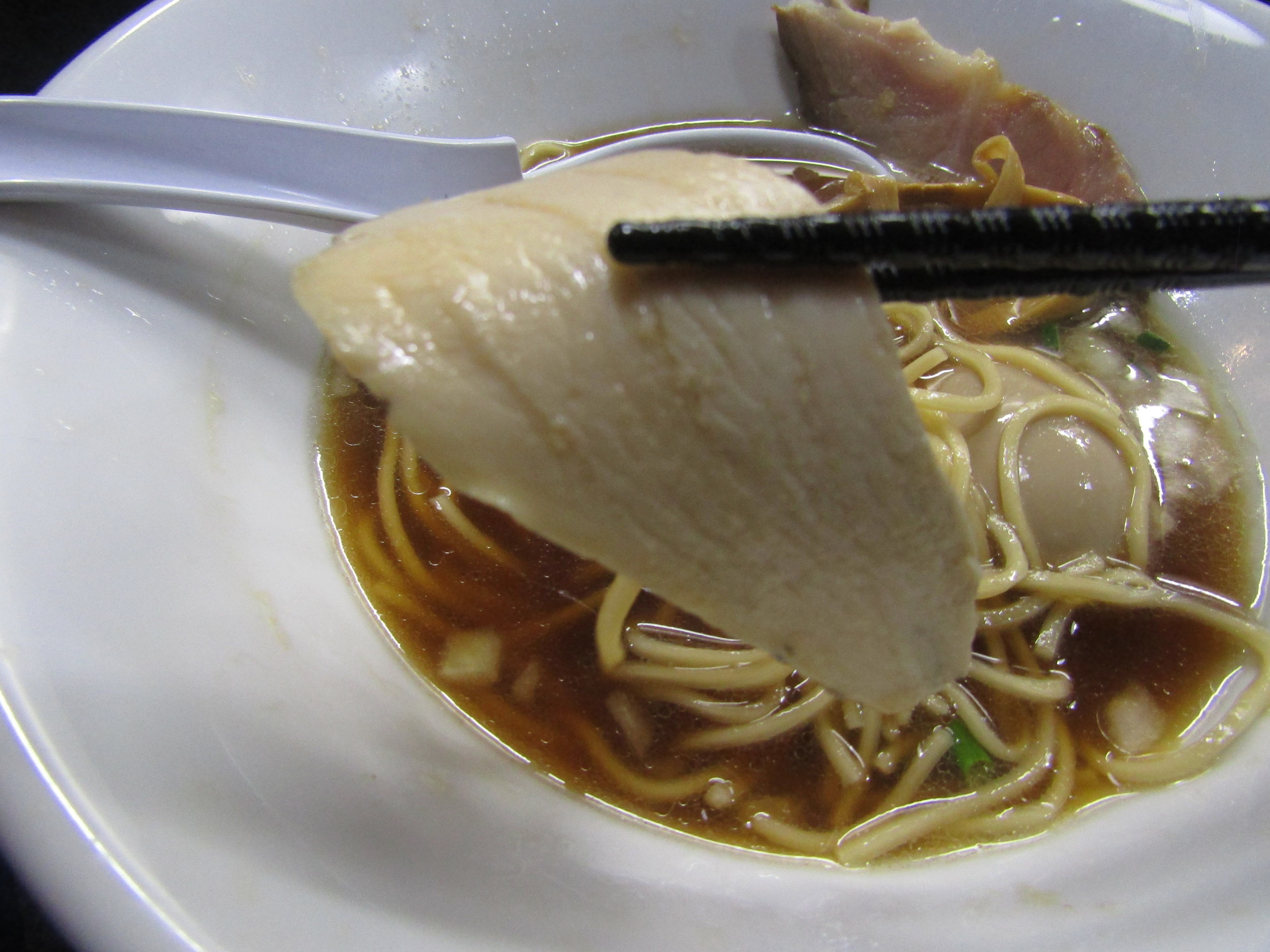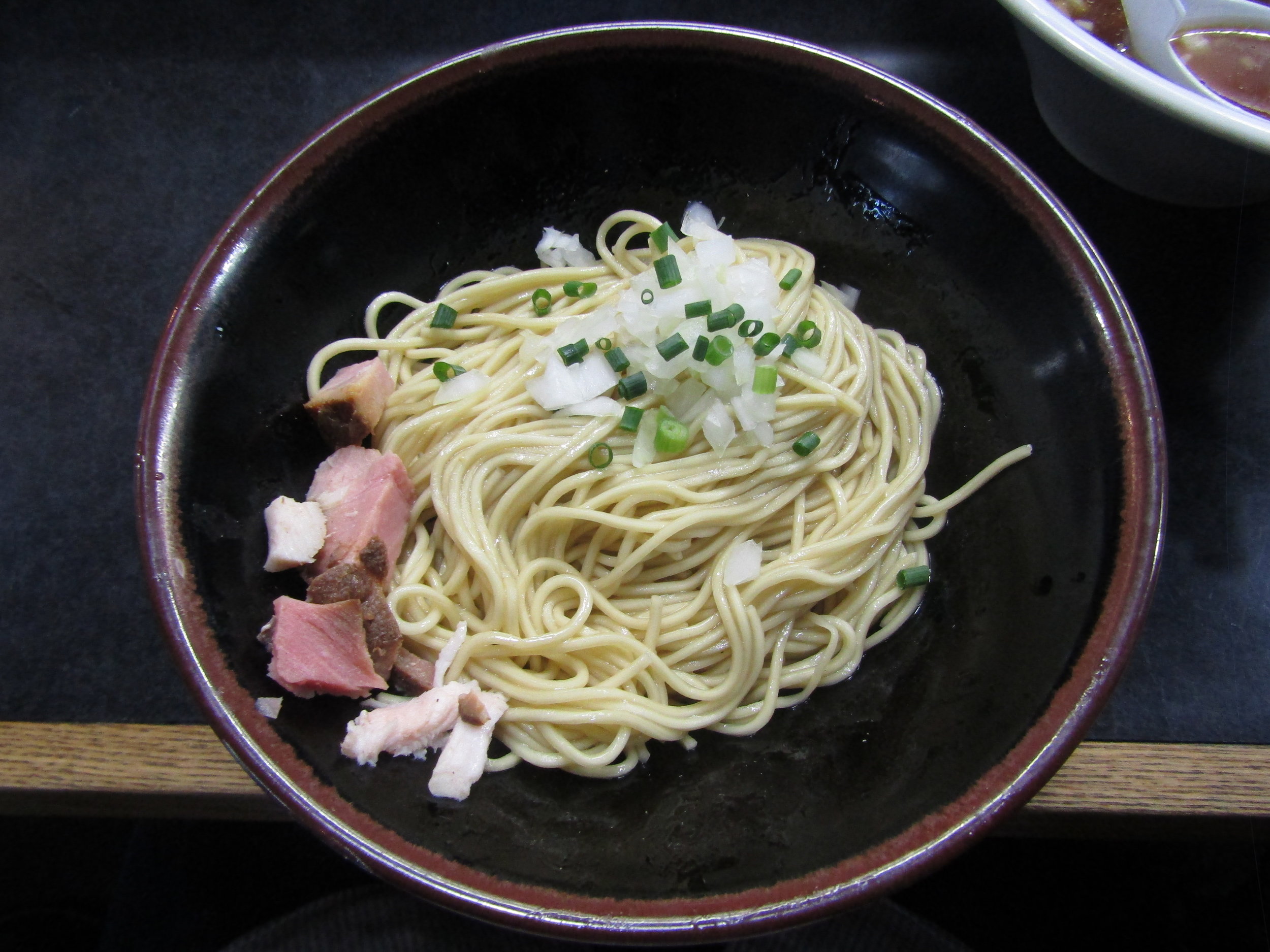Mendokoro Haru (麺処 晴); Red Light District Ramen, Uguisudani
A while back, a friend and I decided to walk the entire length of the Yamanote line visiting every station along the way. One of the more interesting stations was Uguisudani as the station is famous for an inordinate number of love hotels in comparison to other stations. Apparently this is mainly due to the fact that it is a hot spot for Red Light District “therapists” who meet clients at the station and provide their “services” at the hotels near by. In the midst of all these love hotels and seedy clients sits an extremely famous ramen shop known for niboshi based ramen. Mendokoro Haru is a brisk ten minute walk from the station, so you’ll be away from the love hotel district by the time you arrive at the restaurant, but it is an interesting sight to see on your way. While Mendokoro Haru is in an uncomfortable location, once you set foot in their establishment, you’re be transported to an amazing restaurant serving some of the best ramen in Tokyo. Haru doesn’t have a set day off so be sure to check online to be sure they are open. For lunch, Haru is open from 11:00-15:00 while dinner hours are 18:00-21:00. Weekends, Haru is closed for dinner, but have an extended lunch hour from 11:00-17:00.
Inside you’ll find the ticket machine on the right and your typical counter seating on the left. It’s a relatively big restaurant, but they do not offer table seating so don’t come in with a group thinking you’ll be able to sit together. On the menu here are three ramen varieties; Chuka Soba (shoyu), Shio Soba, and Noukou Soba. The first row with the bigger buttons are the three most popular items; the Tokusei Soba (all extra toppings), Chuka Soba, and Noukou Soba. The second row is the Chuka Soba, second row is the Shio Soba, and the blue buttons on the bottom is the Noukou Soba. Starting from the left, the first column is regular bowl, next is with a soft boiled egg, third is the Tokusei (with all the toppings) and the fourth button is the Char Siu Soba with extra roast pork char siu. The white buttons are the rice bowl options of pork over rice, pork with mayo over rice, and a Niboshi Ochazuke (rice with Niboshi broth poured over). Finally the bottom yellow buttons are the toppings. Starting from the left is the soft boiled egg, menma bamboo shoots, tokusei toppings (on the side), extra pork char siu, dried seaweed, and regular seaweed. At the table, you can ask for Kaedama (extra serving of noodles) which I highly recommend so come with an appetite!
All three ramen varieties have the same soup base, but the Noukou version is a highly condensed version and is therefore a lot thicker than the other two. Due to the limited amount of the condensed, Noukou soup they can make in a day, they usually sell out of this version within the first hour-ish of lunch. I was unfortunately unable to arrive before they sold out, so my review for the day will be on the Chuka Soba.
Pictured above is the Ajitama Chuka Soba which came with the marinated soft boiled egg as topping. The bowl typically comes with a bit of menma bamboo shoots, one slice each of the chicken and pork sous vide char siu, and a handful of diced onions. My initial reaction was of surprise due to how fatty the soup was based on appearance despite it being a Niboshi, dried sardine soup base. After tasting I realized there is a bit of chicken broth mixed in with the soup bringing a bit of fattiness to the soup which was quite good. The Niboshi, dried sardine is the main drawing point here though as it hits you with an intense burst of umami flavor. The savoriness of the dried sardines blends well with the oily chicken stock which are all accentuated with the smoky shoyu blend tare (seasoning oil).
I really enjoyed the noodles here as it had a bit of a wheat undertone that matched with smokiness of the soup. Made in house, the noodles are traditional straight round noodles that clings the soup well. As the soup is thin, its not going to cling that much soup regardless of the noodle type so I liked the use of thin noodles as not to overpower the broth. The noodles allowed me to appreciate the flavors of the soup to the fullest which is likely the goal here as it is the main attraction. Menma bamboo shoots are the thin, stringy variety and provided a nice shoyu flavor. It is a bit soft, but still has some crunch remaining in the middle. I was quite glad I ordered just the Ajitama Soba as the char siu wasn’t spectacular. As it is a light broth, the shop uses light flavors to marinate the char siu slices to not muddle the soup, but made it a bit bland for my liking. Overall, I thought it was a fantastic bowl for Niboshi lovers as they really go above and beyond to maintain those flavors.
As I mentioned earlier, the Kaedama is a must order here. If you’ve ever read my review on Ibuki or Ramen Koike, you’ll know that a lot of these Niboshi ramen restaurants offer these special Kaedama that comes with a bit of char siu, diced onions, and a special seasoning sauce. If this is your first time eating a Kaedama at a place like this, I’ll go over how you eat it now. First you want to mix the noodles together with the sauce until everything is combined. Imagine this is a Maze Soba (no soup ramen) and have a few bites of this Kaedama as is to start. The seasoning sauce has a very distinct vinegary, fish flavor that tastes fantastic as is. Once you thoroughly enjoy it as is, next put in some extra seasoning sauce and vinegar provided at the table to adjust it to your liking and have a few more bites. Once you’re ready, throw the rest of the noodles in to your soup and enjoy the added seasoning sauce and vinegar flavors of your soup. While it is a bit pricey in comparison to other restaurant’s kaedama, but is definitely worth it as it allows you to enjoy three extra flavor profiles to your ramen bowl.
Again, the shop isn’t in the best neighborhood of Tokyo and is a bit far away from some of the major attraction points in the city. However, I can confidently say that Mendokoro Haru is worth making the trip for as their Niboshi style ramen is incredibly well made and one of the best of its class in Tokyo. If you don’t mind the walk, the shop is actually a 20 minute walk from Ueno station so you can enjoy the Yokocho there after your bowl. Regardless, I hope you will consider venturing out to a bit of a seedy area of Tokyo to try a fantastic bowl from Mendokoro Haru.

